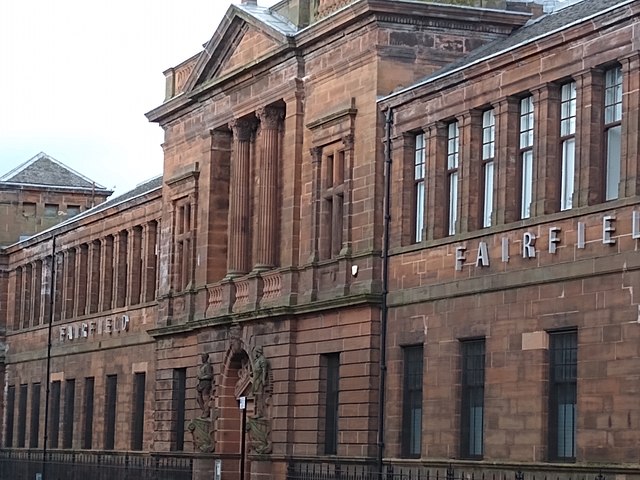HMS Cheshire was a passenger ship that was built in Scotland in 1927 and scrapped in Wales in 1957. She belonged to Bibby Line, which ran passenger and cargo services between Rangoon in Burma and various ports in Great Britain, via the Suez Canal and Gibraltar. The Admiralty requisitioned her in 1939 and had her converted into an armed merchant cruiser (AMC). She was converted into a troopship in 1943, and returned to civilian service in 1948.
HMS Cheshire in war service
The troopship Oronsay, which was damaged by an air attack and assisted by ships including Cheshire
Fairfield Shipbuilding and Engineering Company
The Fairfield Shipbuilding and Engineering Company, Limited, was a Scottish shipbuilding company in the Govan area on the Clyde in Glasgow. Fairfields, as it is often known, was a major warship builder, turning out many vessels for the Royal Navy and other navies through the First World War and the Second World War. It also built many transatlantic liners, including record-breaking ships for the Cunard Line and Canadian Pacific, such as the Blue Riband-winning sisters RMS Campania and RMS Lucania. At the other end of the scale, Fairfields built fast cross-channel mail steamers and ferries for locations around the world. These included ships for the Bosporus crossing in Istanbul and some of the early ships used by Thomas Cook for developing tourism on the River Nile.
The imposing red sandstone offices of the Fairfield Shipbuilding and Engineering Company on Govan Road, which from 2013, has formed the Fairfield Heritage Centre.
The former Fairfield shipyard continues in operation as part of BAE Systems Surface Ships.
HMS Delight, a Daring-class Destroyer launched at Fairfield in 1950, was the Royal Navy's first all-welded warship.





